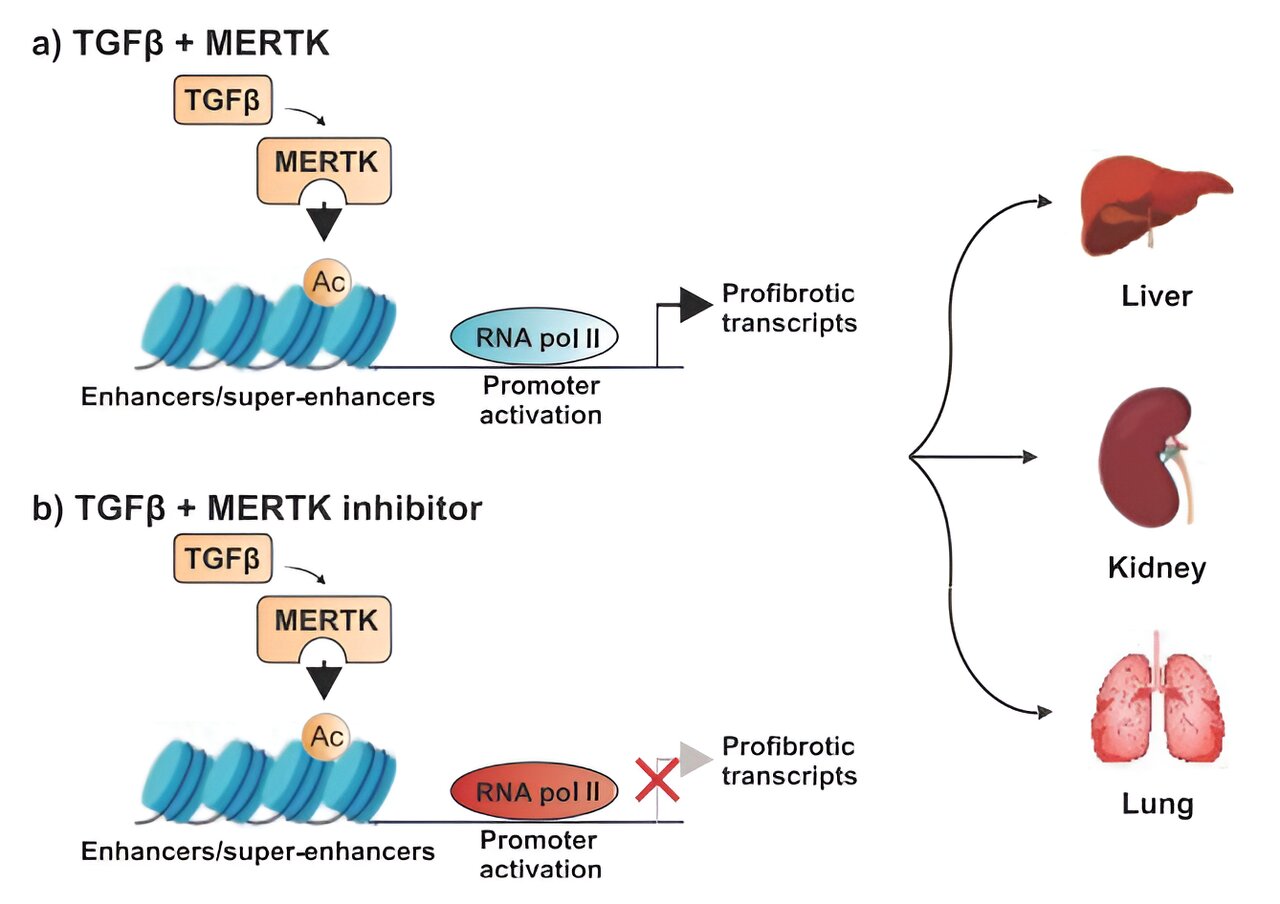Medical science has long been on the hunt for a deeper understanding of the devastating scarring of the body’s organs known as fibrosis, which leads to irrevocable loss of function.
Fibrosis refers to aberrant connective tissue that accumulates in organs impairing their ability to function properly, a process triggered by chronic inflammatory activity. These inflammatory processes can be induced by persistent infection, chemical insults or severe tissue injury. For some patients, the underlying cause of their fibrotic disease remains stubbornly elusive. Fibrotic scarring not only robs patients of healthy organ function, in some instances it steals their lives.
Scar tissue can damage any of the body’s major organs, emerging in the lungs as idiopathic pulmonary fibrosis, or in the liver as fatty liver disease. Kidney and cardiac fibrosis are conditions that can be marked by severe organ impairment. Explained another way, a heart attack can cause scar tissue build up—myocardial fibrosis—but the fibrotic region lacks the contractile activity of healthy heart tissue. Worse, there aren’t many therapies that can durably treat or reverse organ fibrosis, making the search for potential therapies a top research priority.


